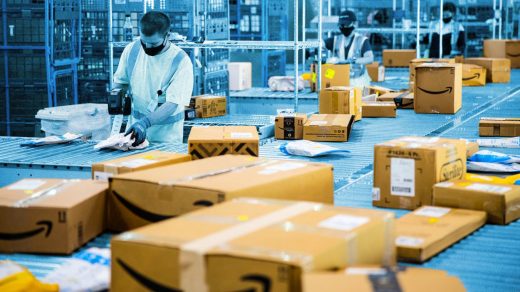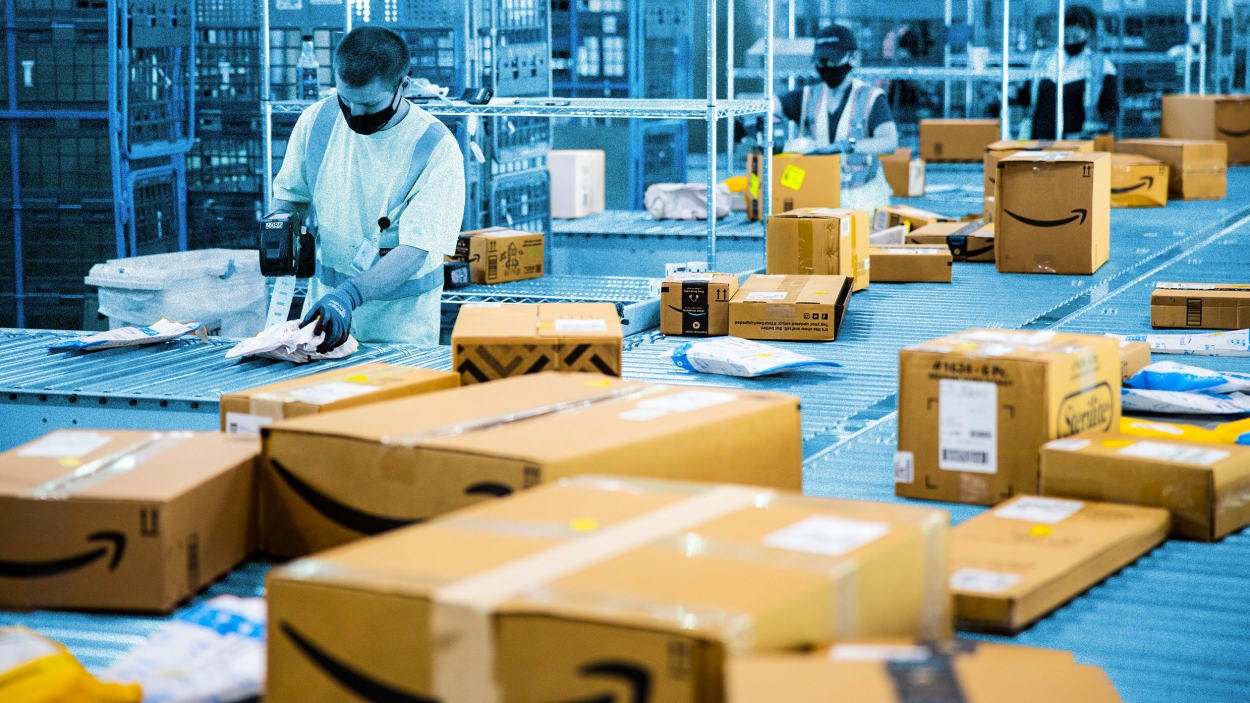Amazon stock rises as online orders pick back up
Amazon on Thursday posted better-than-expected revenue and profits for the second quarter, sending its stock higher in after-hours trading.
The e-commerce giant earned $6.7 billion, or 65 cents per share, for the three-month period ended June 30, much higher than the $3.64 billion industry analysts surveyed by FactSet had anticipated.
Amazon had reported a loss during the same period last year, driven by a big loss on its investment in electric vehicle startup Rivian Automotive. Its profits for the second quarter include a pre-tax valuation gain of $0.2 billion in its Rivian investment.
The company said overall revenue was $134.4 billion, up 11% from the same period last year and beating analyst expectations of 8.5% growth.
“It was another strong quarter of progress for Amazon,” Amazon CEO Andy Jassy said in a statement.
The cloud unit AWS, which has been closely watched by investors, posted $22.1 billion in revenue. But its growth continued to slow.
Part of the slowdown can be explained by the fact that AWS is the market leader in the cloud arena, which makes it challenging to sustain the higher levels of growth it had in the earlier days. But Amazon executives have said the business has been facing short-term headwinds as companies look for ways to save money by reallocating their spending or cutting back on features they don’t need.
In an effort to lure in more customers and gain a competitive edge in the generative AI race where it seems to be playing catchup, the company has also been rolling out AI tools its customers can use to make their own applications. Last week, it said an AI model called Amazon Bedrock is being used by the Irish carrier Ryanair, among others.
Meanwhile, Amazon’s flagship online retail business, which had slowed dramatically in the aftermath of the pandemic boom, showed small signs of strengthening on Thursday, with 5% growth, the best since the third quarter of last year.
Deliveries for customers who shop online are also getting much faster under the retailer’s new regionalization model. Previously, Amazon used to fulfill orders from warehouses across the country. But now, the company has eight regions across the country that are serving smaller areas, which helps it accomplish a twofold goal of cutting costs and getting items to its Prime customers quicker.
During the second quarter, more than half of Prime orders across the top 60 U.S. metro areas arrived the same day or the next, the company said Monday, touting what it called its fastest Prime speed ever. The company also publicized its plans to double the number of same-day delivery sites in the coming years.
Amazon’s physical store sales, which includes its Amazon Fresh and Go stores as well as Whole Foods, grew 7%. The company has ambitions to be a major player in the grocery sector but hasn’t grabbed significant market share since launching the Fresh and Go chain three years ago. It now operates dozens across the country.
Jassy said earlier this year that groceries present a big growth opportunity for Amazon, but the company needed to find the right “mass grocery format” worth expanding broadly.
On Wednesday, Bloomberg reported the company was planning to add an online service that would allow customers to integrate orders from Whole Foods and Amazon’s other grocery stores into one cart. In a blog post, the company also provided a look at two revamped Fresh stores in Illinois that offer more product selections, self checkout and Krispy Kreme Doughnut shops. It also began offering grocery deliveries for nonPrime members.
The company said it expects to earn between $138 billion and $143 billion in revenue during the third quarter.
—By Haleluya Hadero, Associated Press
(12)



